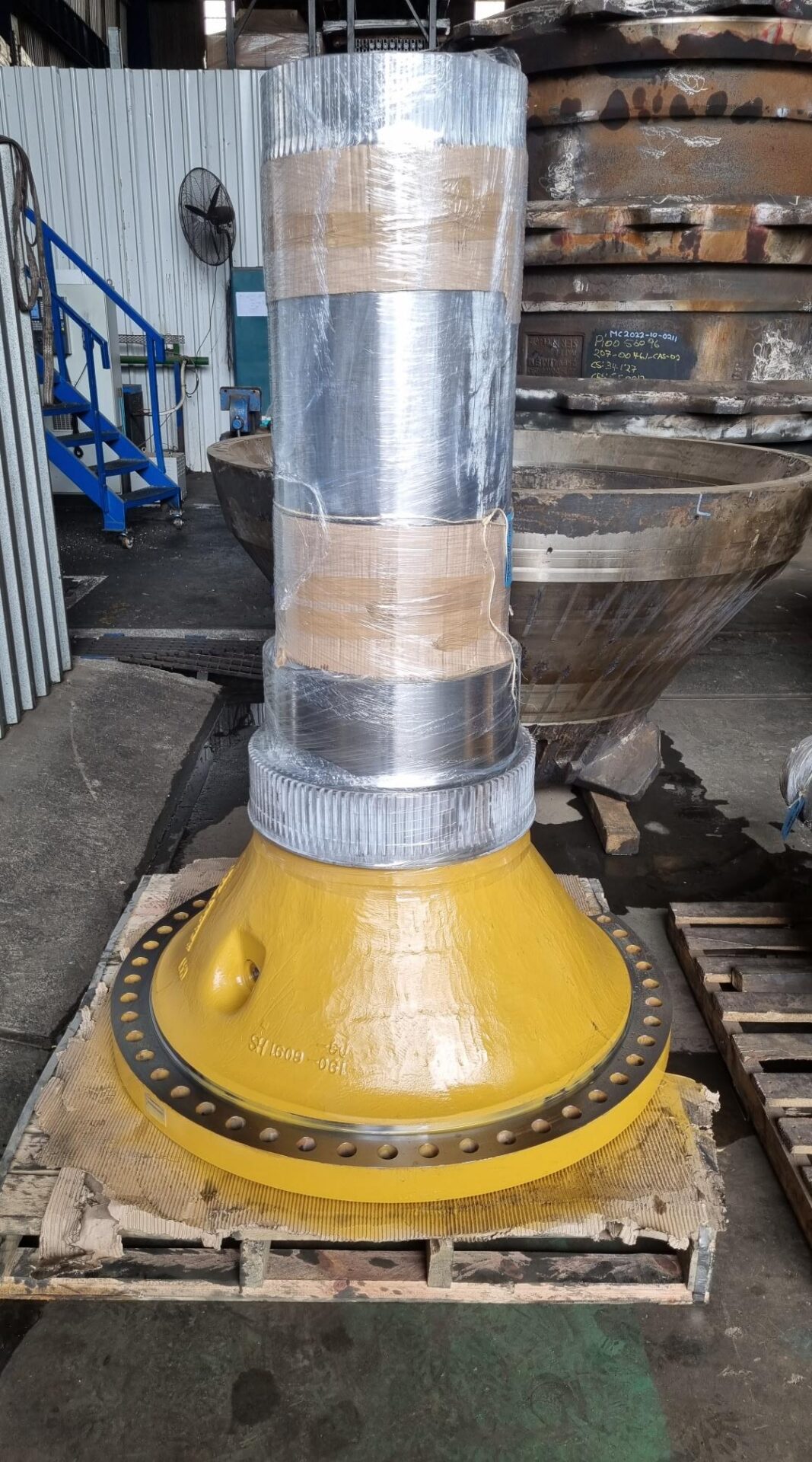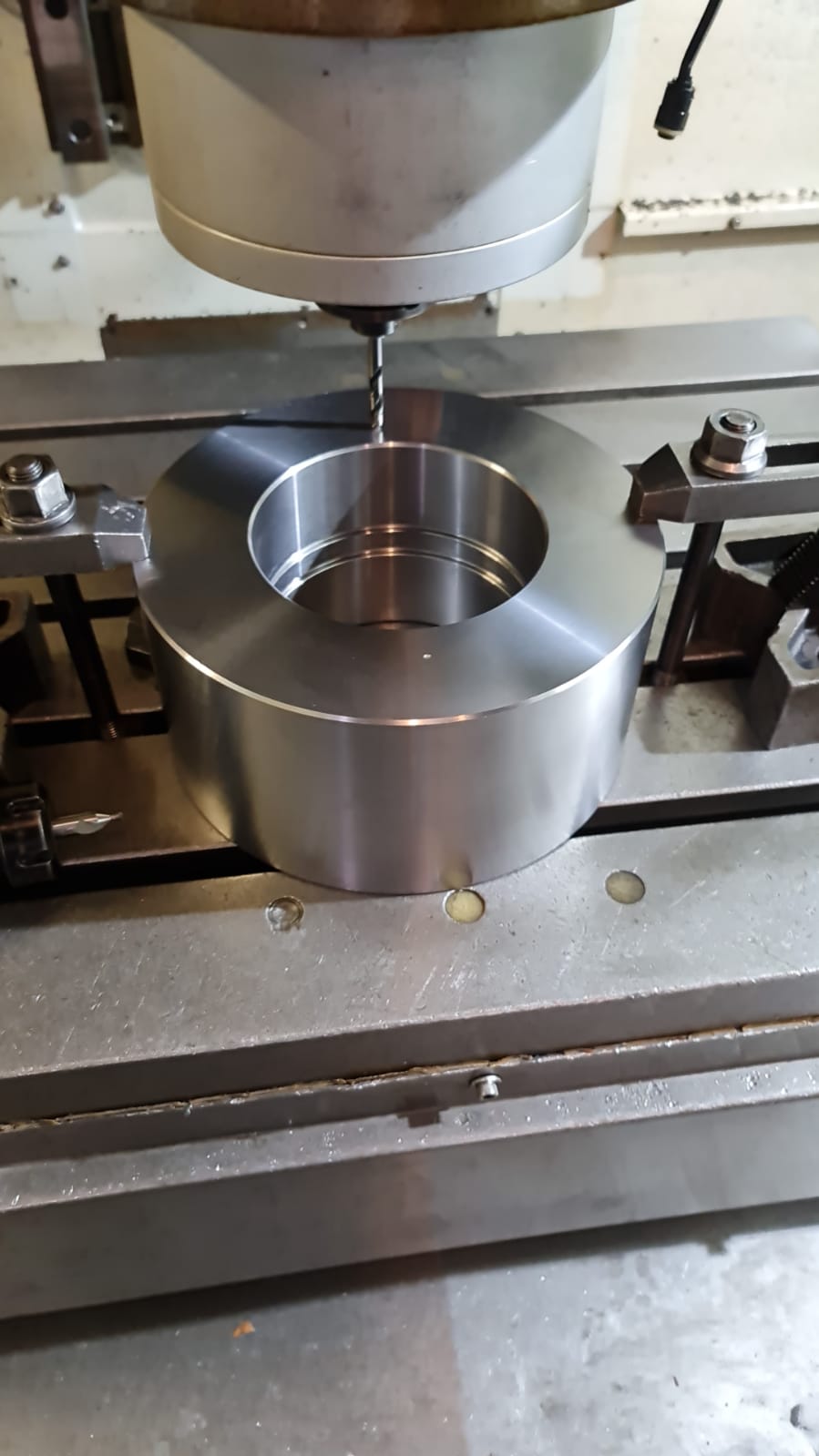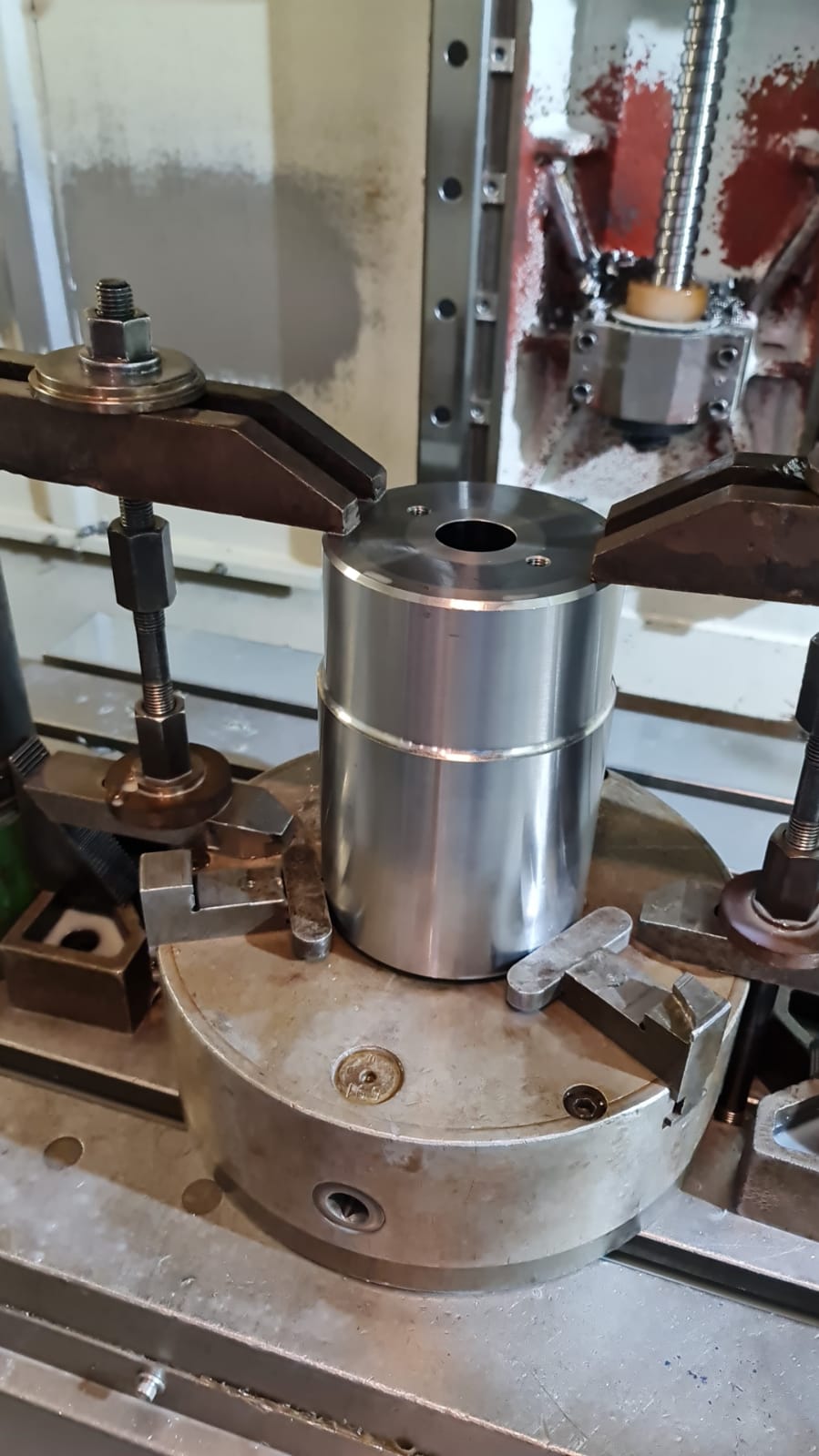Intra Trade Africa Services
Engineering Works
We offer conventional turning and milling solutions and well as CNC production work on milling, lathe and machining centres.
Thermal Spray
We offer arc spray solutions for customers on the seal and bearing journal areas and rebuild of printing and paper rolls. We offer HVOF process as a chrome replacement solution on hydraulic cylinder rods, shafts, and printing or paper rolls. We also supply wear and impact resistant coatings like tungsten and chrome carbides on various components.

CNC Machining Services
Computer Numerical Control (CNC) machining is a manufacturing process in which pre-programmed computer software dictates the movement of factory tools and machinery. The process can be used to control a range of complex machinery, from grinders and lathes to mills and CNC routers.

HVOF Process
High velocity oxy fuel process is a thermal spray process which is used to spray a variety of powders ranging from chrome to tungsten carbides to name a few.
The HVOF spray process works by mixing liquid or gas fuel with oxygen flowing into a combustion chamber where the fuel and gas is ignited. This result in a high temperature flame (2700 – 3100 °C) which under pressure accelerated through a nozzle to reach subsonic speeds (1500 – 2000 m/s).
The high velocity creates characteristic shock waves in the flame which is visible as a diamond pattern in the flame.
Powder, specific for the type of application is fed into the centre of the flame which then partially melt on the surface while in the flame. These particles are then through the flame deposited onto the component surface to form a mechanical bond with the base material.
These coatings are low in porosity <1%, low oxide inclusions and have high bond strengths which provide low wear properties, high corrosion and high temperature resistance in various applications.
Applications:
- Hydraulic cylinder rods, ball valves, rollers in printing and paper industries, bridle rolls, turbine shafts, pump spares, spindle bearing landings, landing gear and various sealing applications.
Characteristics:
- High combustion pressure.
- High gas and particle velocity.
- High coating quality.
Advantages:
- Incredibly low porosity and dense coatings.
- Good wear resistance.
- Higher harnesses.
- High bond strength.
- Higher deposition rates than traditional chrome plating.
- Increased corrosion resistance.
- Smooth as sprayed coatings.

Arc Spray Process
Electric arc spray is a process in which two wires (various material types) are fed through a push or a push/pull feeder system into a spray gun.
The system uses DC power to energize two conductive wires (one positive and one negative). These wires then in the gun arc against each other resulting in melted material. This melted material is then transferred onto a component substrate with clean compressed air which blows through the centre of the arc of the two wires, atomizing the molten material into fine droplets. These droplets of material coming into contact with the substrate flattens and form splats. These splats form one on top of the other to form a strong mechanical bond.
Different coatings of zinc, aluminium, chrome steels, copper, bronze can be sprayed for corrosion protection, surface modification and decoration as well as for engineering reclamation.
Applications:
- Corrosion protection through zinc and aluminium coatings that are anodic to the underlying steel substrate on large steel structures (bridges, lamp posts and offshore structures.
- Reclamation of engineering components such as but not limited to journals, bearings, exhaust systems, shafts, seal areas on brake parts (brake anchors, service brake, park brakes and wheel hubs) with bronzes and steel.
- Electronic component housings with conductive coatings (copper, zinc and aluminium) for shielding from electromagnetic interference.
Characteristics:
- High coating quality.
- High deposition rate.
Advantages:
- Easy to use.
- Can spray a large variety of materials.
- Low heat input into base material.

Plasma Spray Process
Plasma spray utilize a high energy heating source to melt and accelerate fine powder particles onto a prepared substrate. During impact, the molten particles or droplets cool down and solidify instantly by heat transfer to the underlying substrate and therefor form, by accumulation a coating consisting of thin layers.
For plasma spraying, the creation and utilization of plasma as the high temperature source are legalized in the plasma torch. The plasma torch or gun consist of a cone-shaped thoriated tungsten cathode and a cylindrical copper anode.
Gasses (for forming plasma) flow through the annular space between two electrodes and an arc is initiated by high-frequency discharge. A stream of gas which flows between the electrodes stretches the arc, so that in its course from one electrode to the other, the arc loops out of the nozzle of the torch as a plasma flame.
Gasses that are mainly used on the plasma spray process is He, H2, N2 and Ar and are mainly used as the plasma forming gasses.
The temperatures in the plasma flame are normally 10 000 – 15 000 °C. For this reason, we can spray almost any metal or ceramic including refractory metals or oxides by melting and deposit to form plasma sprayed coatings.
Application:
- Spray printing cylinders.
- Spray internal and external diameters for wear resistance.
- Coatings are used in aerospace, mechanical engineering, automotive, marine, chemical and nuclear industries, iron, steel and glass wear industries, household appliances and electronics.
- Seal ring grooves in the compressor area of aero-engine turbines with tungsten carbide/cobalt to resist fretting wear.
- Zirconia-based thermal barrier coatings (TBCs) on turbine combustion chambers.
- Wear resistant alumina and chromium oxide ceramic on printing rolls for subsequent laser and diamond engraving / etching.
Characteristics:
- Increased wear resistance resulting from erosion, sliding and abrasion.
- Increases resistance to corrosion and chemicals
- Increase resistance to cavitation.
- High temperature resistance.
- Spray ceramic, cermet and metal coating over a wide range of products.
Advantages:
- Extend service life of component.
- Reduce equipment downtime.
- Can spray a large variety of materials.

PTA - Plasma Transferred Arc
PTA process, Plasma Transferred Arc, is a melting welding process suitable for hardfacing on mechanical workpieces subject to wear and/or corrosion with super alloy metal powders.
The powder filler metal is continuously projected on the piece through the plasma arc. The driven output of the PTA torch allows to keep the dispersion in flat below 5% and to deposit, in max efficiency conditions, beads from 1 to 4 mm and width from 3 to 30 mm.
The shape and the size of the coated layer change according to the welding parameters. The penetration control in PTA machines is obtained by varying the quantity of ionized gas and it is not conditioned by the process, unlike other arc welding systems.
The quantity of plasma gas is continuously adjustable by the operator and it is monitored by sophisticated feedback control. This is one of main features of PTA process in welding coatings, so that, in most cases, you can work with one layer only, obtaining a hardness closed to the nominal value of the alloy employed.
Applications:
- Valves for automotive, marine and petrochemical industries.
- Hydraulic cylinders.
- Industrial knives and blades Rollers and lamination rollers.
- Forging matrix dies.
- Rings, moulds and plungers for extrusion.
- Moulds and accessories for glass industry.
- Plasticizing screws.
Characteristics:
- Structural quality.
- Limited heat input to base material.
- Easy automation.
- High welding speed up to 450 mm / min.
- Cost efficient process.
Advantages:
- Excellent impact, wear and corrosion properties.
- Low dilution of overlay.
- Lower heat affected zones.
- Less chances of cracks and pinholes forming in weld.
- Low pollution.

Micro Welding
Precision welding that is used to join different minute parts together is known as micro welding. This is a careful type of welding. It is performed in a small area and it should be taken care of that the parts near welding are not damaged.
Micro welding is defined as a generic term for welding processes which are applied to the sections which, owing to the object for welding being extremely small and or fine, are affected by factors such as weldability, diffusion thickness, deformation amount and surface tension, particularly whose effect on dimension is to be taken into account.
Intra Trade Africa (Pty) Ltd
- VAT no: 4790294260
ISO Ratings



Copyright © Intra Trade Africa 2021 – All Rights Reserved | Privacy Policy 




